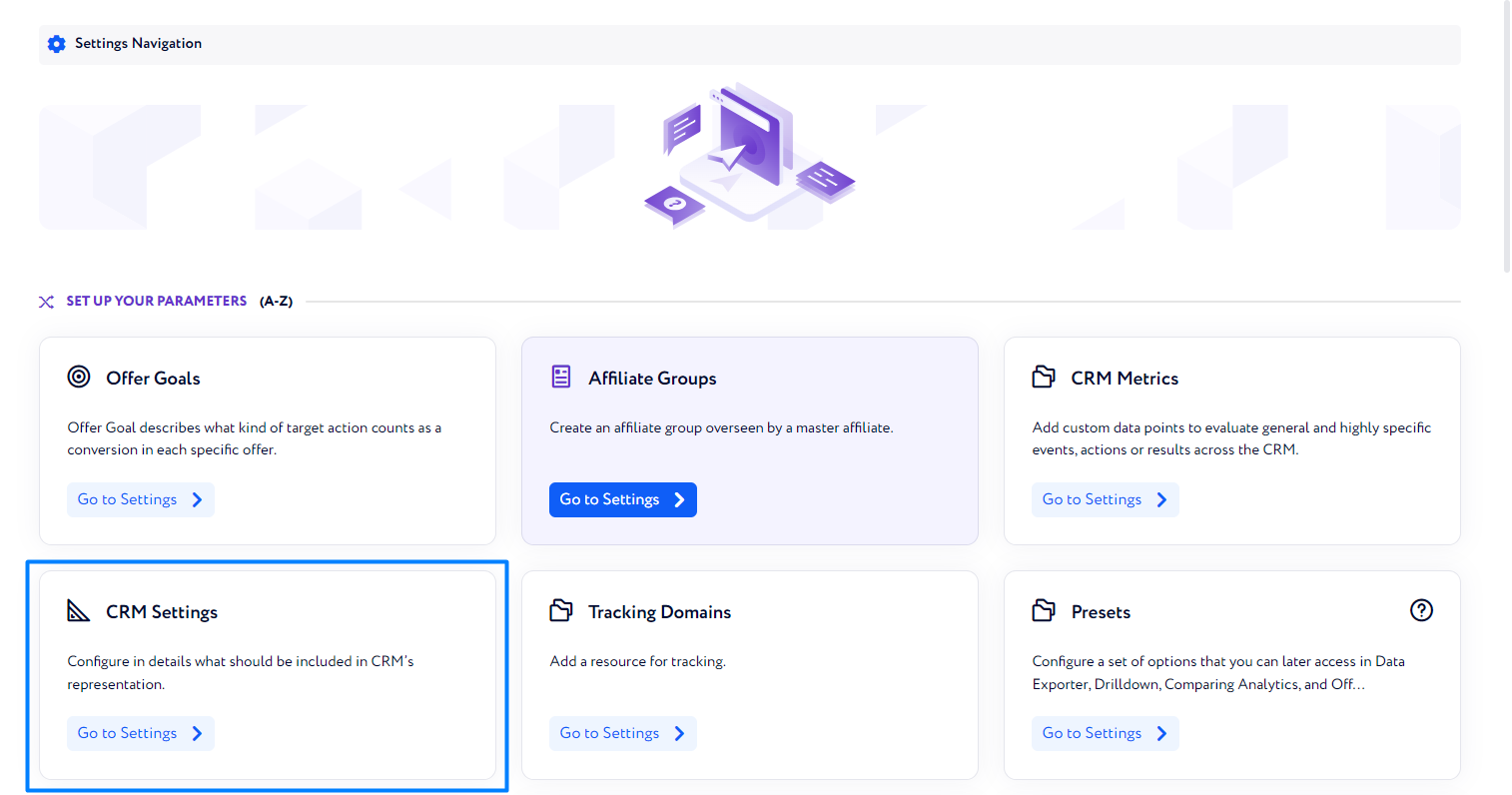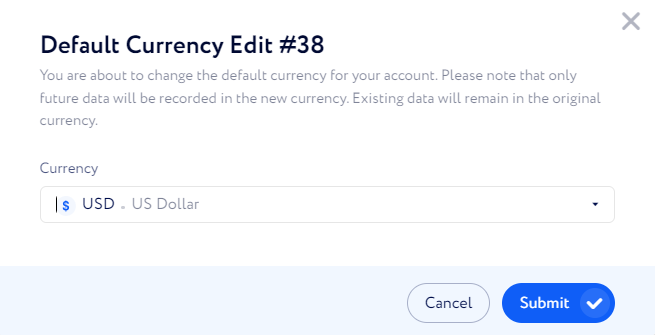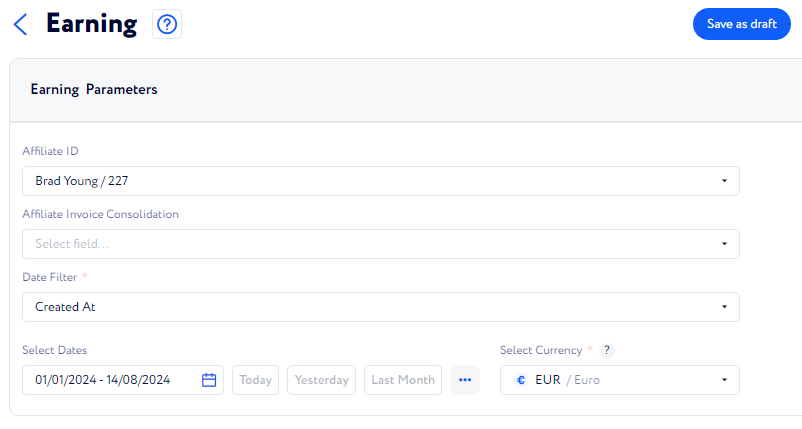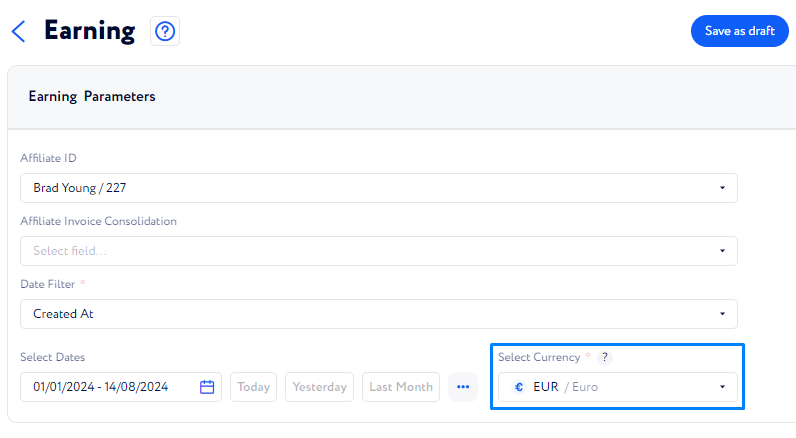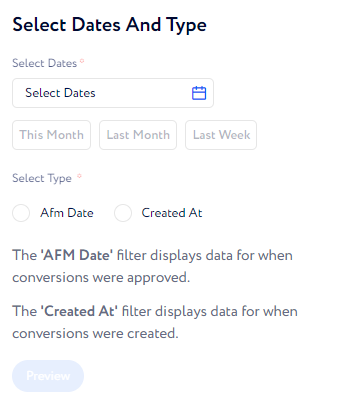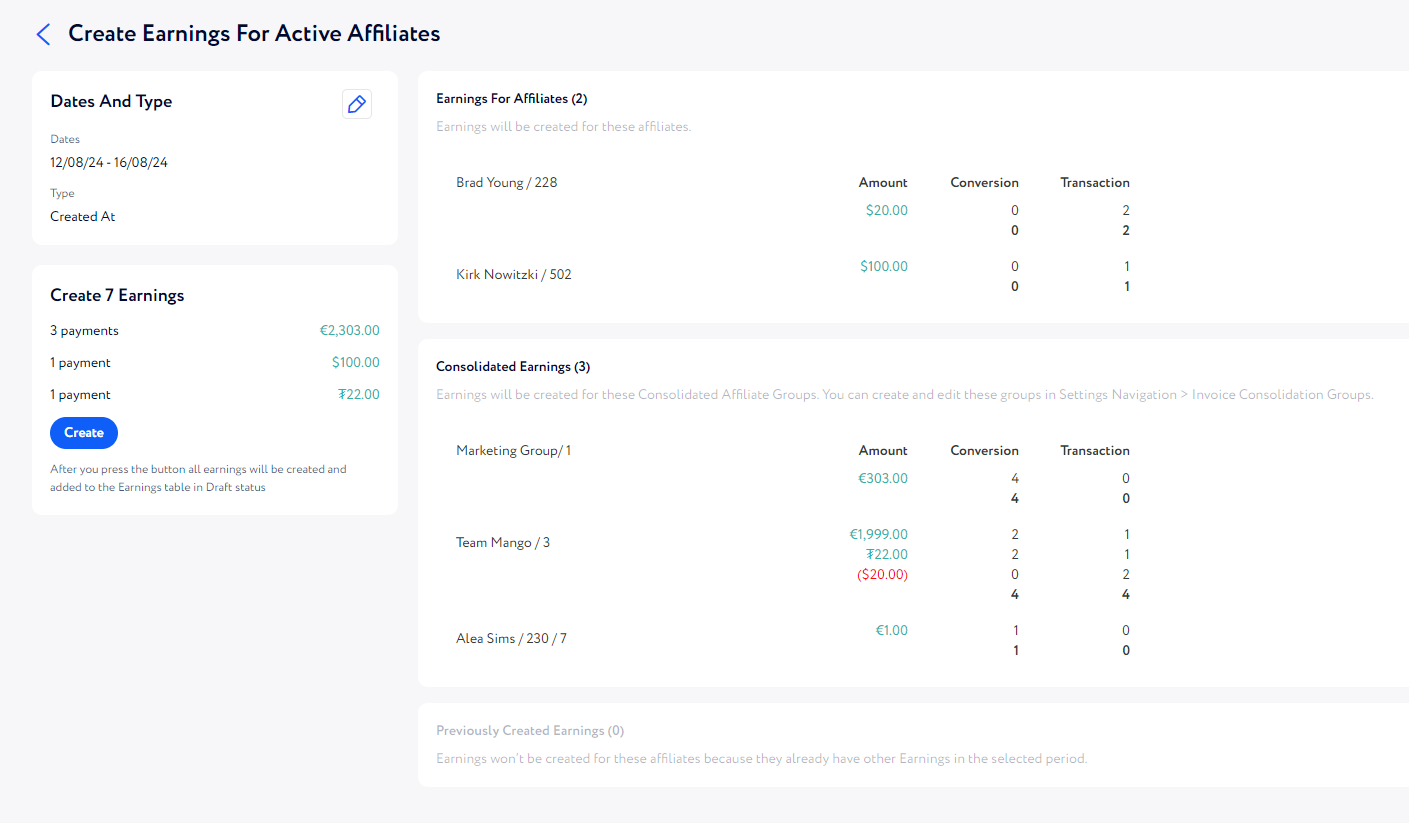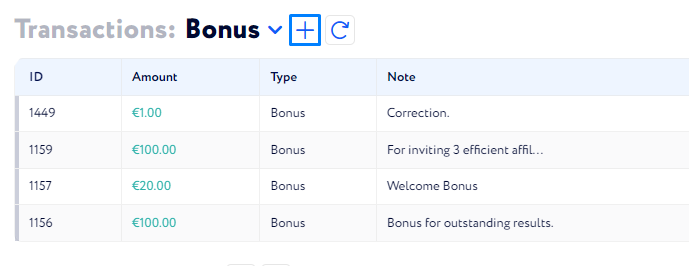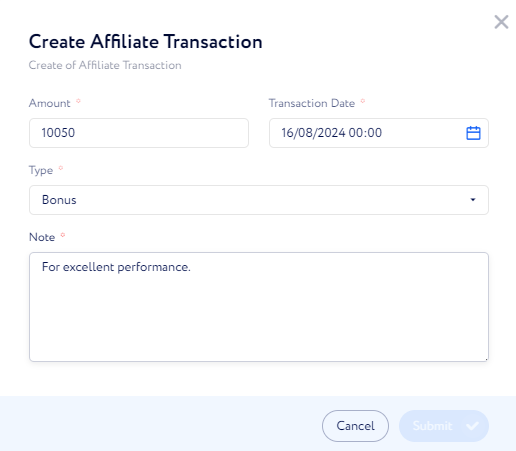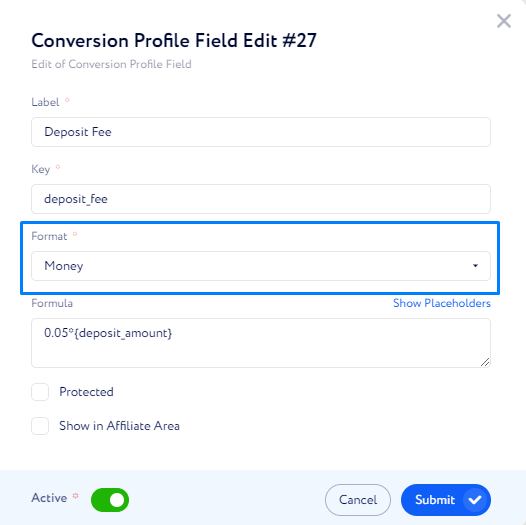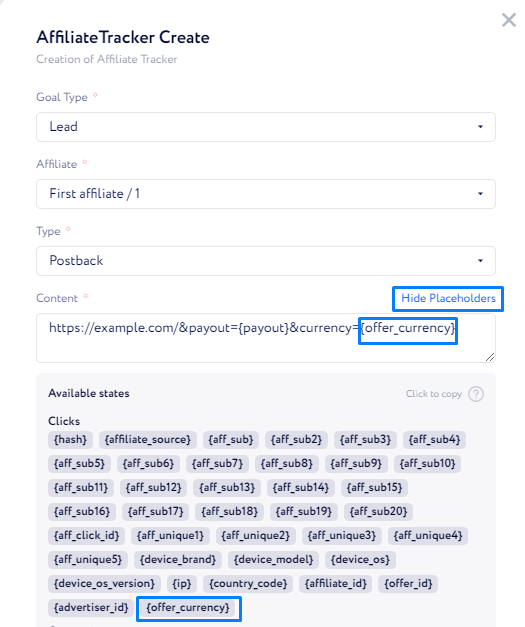Multicurrency
General Info
Now the multicurrency system has become an integral part of the CRM. It’s used in all sections and allows you to scrutinize each currency separately.
For that purpose, each section of the CRM that holds any financial records has a currency selector. It filters the contents of the page and returns only the values that are related to the selected currency.
For now, the currency conversion isn’t embedded, and there is no global report on all currencies. But we are constantly updating the platform to improve its end-to-end workflow.
Background
In the 1.1.16 release, we’ve introduced the first iteration of Multicurrency, which included currency conversion via a third-party provider. It’s still completely functional, but it’s only applicable in the billing section.
Note
If you use only one currency, the functionality and visual interface remain as usual; all additional currency selectors and options will be hidden.
Configure Currencies
This section covers all settings needed for enabling and managing multicurrency in the CRM.
Offer Currency
If there are several currencies in the system, how to select when a certain one should be applied? There’s a simple solution: now every offer has the Currency attribute. All related conversions that bear any financial data will be provided in the currency of that offer.
Affiliates and advertisers aren’t strictly attached to one or another currency. By limiting their access to specific offers, you can manage the currencies that are available to them.
To configure a currency for an offer, follow these steps:
Navigate to the Offers table and find the Offer you want to change. Click the Edit button.
Find the Currency field and select the desired option. Then click Submit to apply the changes.
Alternatively, you can set offer currency while creating an offer.
Once the currency is selected, all conversions that are related to the offer will have their financial data recorded in that currency.
Attention
Note, that a change of offer currency doesn’t modify any historical data.
Default Currency
Among all available currencies, one must be selected as the default one. This currency will be initially shown for all sections of the CRM. Other currencies will also be available for review just by switching the currency selector on a page.
The default currency also affects the majority of transactions.
Note
The default currency is automatically applied to all existing offers without a specified currency. All upcoming conversions related to these offers will be attached to the default currency.
To configure the default currency, follow these steps:
Go to Settings Navigation>CRM Settings.
Open the Default Currency settings and select one of available currencies.
Missing a specific currency?
Please contact our support so we can add the currency you need.
Review currency information across the CRM
As a general rule, pages that hold information now have a currency selector that allows you to review data for each currency separately. However, there are some exceptions.
The article proceeds with the general tools of reviewing currency, followed by CRM sections that involve a different approach to reviewing and applying currency changes.
Reporting
Select a currency to filter the data to only show records in that currency. Data in other currencies will be hidden.
This method applies to the following sections:
Dashboard
Drilldown Reports
Comparing Analytics
Deals Updater.
Tables
For other sections that display tables, currency management is slightly different. You can filter the contents of the page using a filter rather than a designated selector. The filter is called Currency Code for all such sections of the CRM.
This method applies to the following sections:
Offers
Conversions table
Deals History
Invoices
Payments.
Exceptions
Data Exporter has a unique tool for changing currency in its reports, and this is done by applying a condition.
This condition is available for all topics of the Datra Exporter besides Clicks, Affiliates, and Advertisers.
Billing
The Billing section is unique in having several ways for configuring currency.
Firstly, it preserves the tool for converting the earnings currency into the affiliate’s default one. For detailed instructions, review this article.
Secondly, it’s been adjusted to function with several available currencies without converting them. It applies to both manual creation of conversions and automated creation of all available earnings. Let’s examine them one by one.
Manual Earnings Creation
To manually create earnings, follow these steps:
When on the Earnings page, Click the Plus icon.
Fill in the fields to create earings for a specific affiliate in a certain period.
3. Select a currency to filter the list of affiliate’s conversions and transactions.
When you are ready, save the earning by clicking Save as Draft or Apply Changes.
Create Earnings for Active Affiliates
This feature allows you to create all earnings in a set period for all affiliates and all their currencies. If an affiliate generates conversions in several currencies, there will be a dedicated earnings list for each currency.
To create earnings for active affiliates, follow these steps:
When on the Earnings page, Click the Create Earnings for Active Affiliates icon.
Select a timeframe for earnings.
Review the total amount of earings in the side widget and the list of earnings in the tables on the right.
Let's explore each element in detail:
Dates And Type – here you can configure the timeframe. All conversions and transactions will be checked if they can be used for creating earnings.
Create [x] Earnings – it displays information about total payout values in all earnings that you are about to create. They are divided by currency.
Previously Created Earnings don’t account for the total values, and they won’t be created. It simply shows manually created earnings that overlap the selected dateframe. They are kept intact in order to preserve any manual changes you may have made to them.
Click Create to add the listed earnings.
Transactions
Note
Transactions are alternative methods of sharing money with affiliates. They include referral program rewards, fees, bonuses, and balance corrections called “no negative carry over”.
There are two ways to generate transactions, each has specific way to get currency information:
manual transactions
automated transactions
Autotomated Transactions
Automated transactions are those which were generated via automatisation rules in Trees.
To understand how automated transactions interact with currency, we should divide into 2 groups:
dependent of conversions
independent of conversions.
The dependent transactions receive their currency from the offer of related conversions. This applies to the following transactions:
Referral Bonus
Referral Correction
Master Fee.
The other transactions don’t depend on conversions, so they pull currency information from the default currency of the CRM. There are only two of them:
Bonus
No Negative Carry Over.
Manual Transactions
All transactions, regardless of the type, get the default CRM currency if they are added manually. That is, when you do the following:
Navigate to the affiliate’s profile, open the Payments tab.
Scroll down to the Transactions widget, and click the Plus button.
Fill in the fields and click Submit.
Converison Profile
Note
This feature allows you to create custom conversion fields to track specific data, keep them available for the main tools of the Partner Platform, and get seamless integration with third-party platforms.
There are two types of conversion profile fields that are related to currency. They depend on the value of the Format field:
Money – conversion profile fields with this format get the currency form the related offer, just as usual conversion fields.
Money with Currency – the currency is taken from the affiliate’s default payment method.
Metrics
All types of metrics get currency from the related offer. That's why they are always synced with the selected currency of the section. Here is the list of CRM sections where metrics are used:
Dashboard
Drilldown Reports
Comparing Analytics.
Global Affiliate Trackers
To sync financial data with external trackers, you can use the placeholder {offer_currency}. When it’s added to the tracker link as a parameter, it returns a three-letter currency code of the related offer in accordance with ISO 4217.
For example, it returns USD for the United States dollar, EUR for the euro, and JPY for the Japanese yen.
To add this placeholder to a tracker, follow these steps:
In the sidebar, go to Affiliates>Affiliate Trackers.
In the mode switcher on top of the page select the Global option.
Fill in the fileds. In the Content field, click Show Placeholders and select the {offer_currency} to add it to the field. Use it as a parameter of a URL.
Click Submit to add a global tracker.
FAQ
Can I convert currency in the billing section?
Yes. Follow the instruction to do it.
Can I get a single report on all currencies?
Currently, it isn’t available on our platform
Can I add a custom currency?
The number of available currencies is limited. If you need a specific one, contact our support team.
Can I get a united report for all currencies?
Currently there is no such option.




